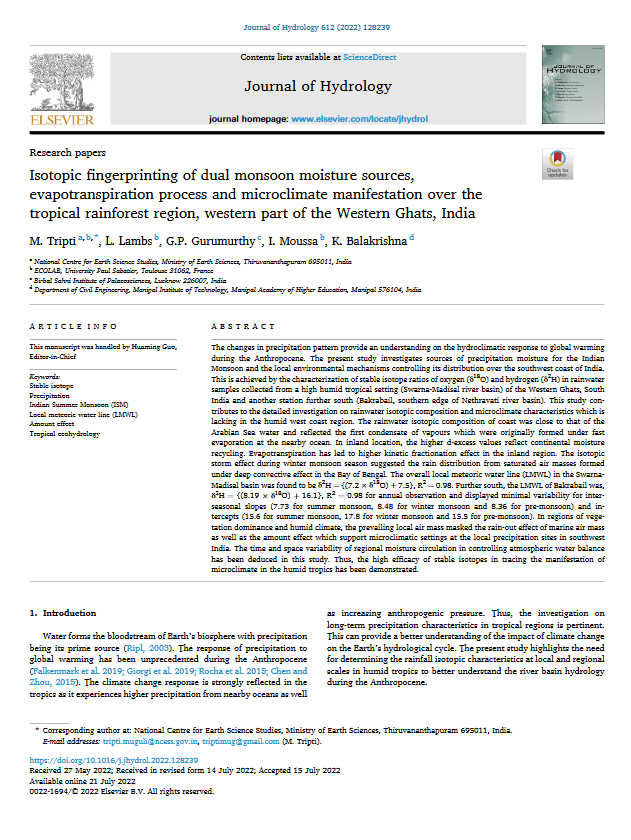
Assessment of monsoon moisture sources and their variability by secondary environmental controls was carried out in South India using stable isotopic composition of oxygen and hydrogen in rainwater. The rainwater isotopic signature in southwest India reflected dual monsoon sources with moisture from Arabian Sea and equatorial Indian Ocean during summer monsoon season, and a few depressions and cyclones generated over the Bay of Bengal formed the winter monsoon sources. The predominant summer monsoon rainwater along the eastern Arabian Sea coast reflected rainfall from first condensate while the marine moisture signatures were altered by the evapotranspiration process in inland regions indicating continental moisture recycling effect. The calculated high deuterium excess values (d-excess = 10-18‰) for observed rainwater also suggested higher influence of local precipitation effect in humid tropical river basins of the Western Ghats which usually exhibited annual average relative humidity ~ 85 % and temperature ~ 25°C. The time and space variability of regional moisture circulation in controlling atmospheric water balance was deduced in this study. The findings of this study revealed microclimate manifestation in the Western Ghats region similar to other cloud forest ecosystems like in South America (for e.g., Amazon basin), Hawaii, Eastern and Central Africa, Indonesia, etc.
Bibliographic Info: Tripti Muguli., Lambs, L., Gurumurthy, G. P., Moussa, I., Balakrishna, K (2022). Isotopic fingerprinting of dual monsoon moisture sources, evapotranspiration process and microclimate manifestation over the tropical rainforest region, western part of the Western Ghats, India. Journal of Hydrology, 612, 128239. https://doi.org/10.1016/j.jhydrol.2022.128239.




 RTI Act
RTI Act
